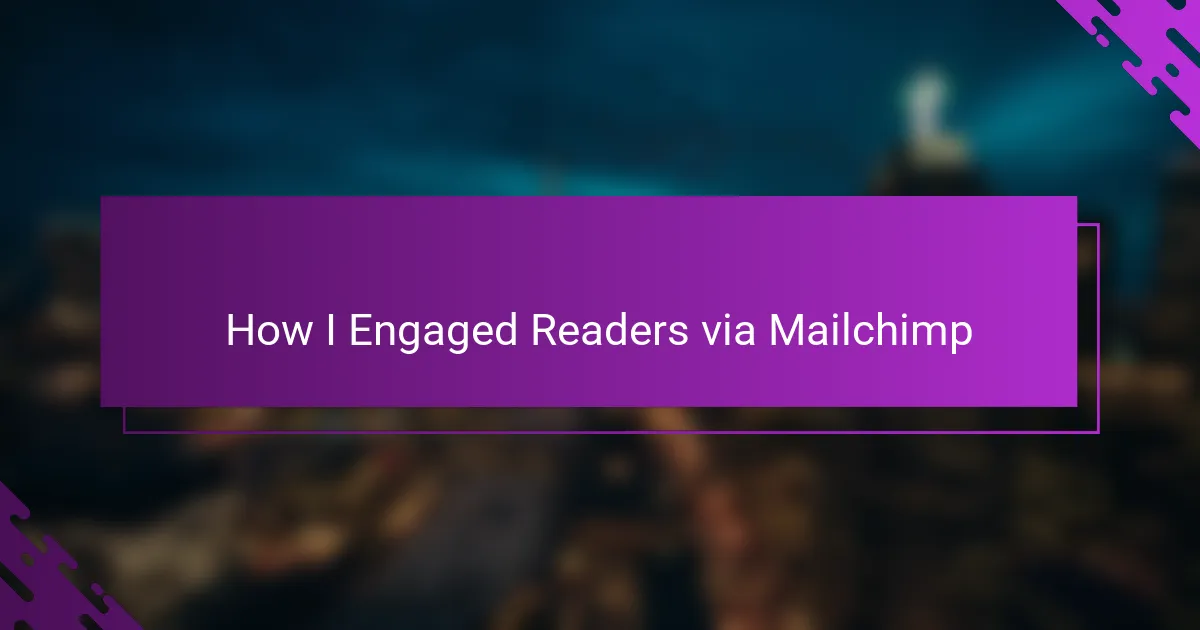Key takeaways
- Mailchimp empowers bloggers to create personalized newsletters, enhancing reader engagement through audience segmentation and analytics.
- Strategically placing sign-up forms and offering valuable opt-in incentives can significantly grow an email list.
- Crafting engaging content with storytelling, clarity, and appealing visuals keeps readers interested and fosters community interaction.
- Utilizing Mailchimp’s analytics helps identify successful strategies and areas for improvement, guiding better content decisions over time.
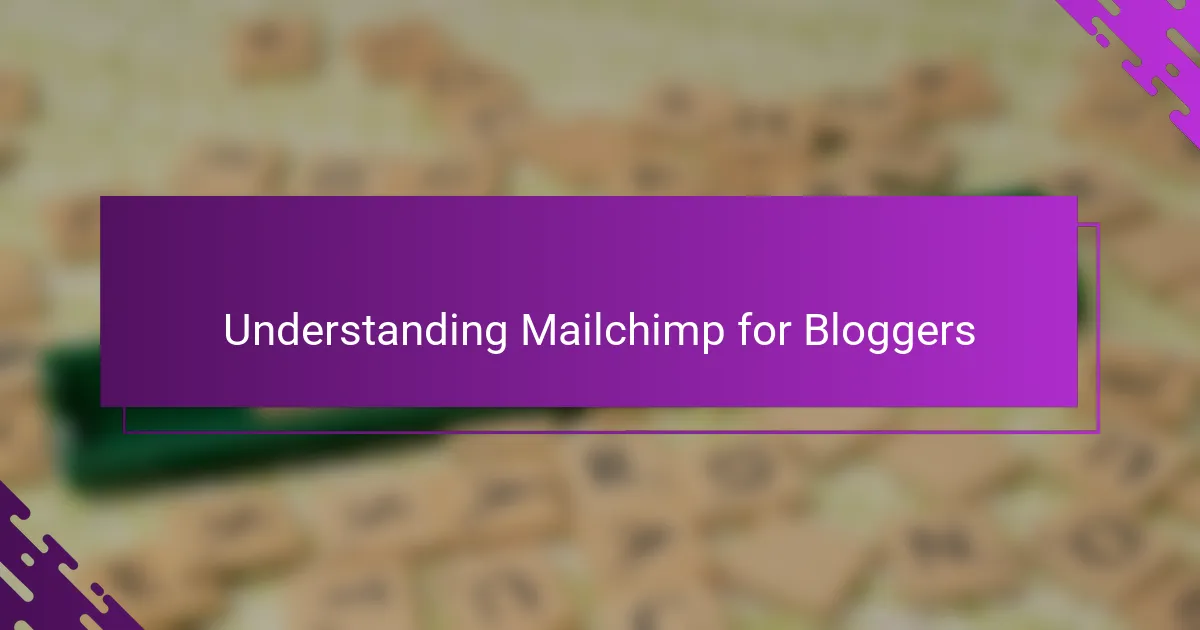
Understanding Mailchimp for Bloggers
When I first discovered Mailchimp, it felt like unlocking a secret tool that could bridge the gap between my words and my readers’ inboxes. As a blogger, understanding Mailchimp means more than just knowing how to send emails; it’s about crafting meaningful connections through customizable templates and targeted campaigns. Have you ever wondered how some bloggers make their newsletters feel so personal and engaging? Mailchimp’s user-friendly interface empowered me to experiment without fear, turning my blog updates into conversations rather than announcements.
One feature that truly changed my perspective was Mailchimp’s audience segmentation. By grouping my subscribers based on their interests and behaviors, I could tailor content that resonated deeply, making readers feel seen and appreciated. This approach not only increased my open rates but also sparked genuine interaction, transforming passive followers into an active community. Have you tried speaking directly to your readers’ unique experiences? With Mailchimp, it became possible, and the results were surprisingly rewarding.
Analytics, often overlooked by new bloggers, played a crucial role in my Mailchimp journey. Tracking which emails performed well taught me what my audience craved and what didn’t land, guiding my content decisions with real data rather than guesswork. This insight shifted my blogging from a solo effort to a collaborative dialogue with my readers. Isn’t it amazing how a simple platform can reveal such rich stories about your audience’s preferences? Mailchimp gave me the tools to listen, learn, and grow as a blogger.
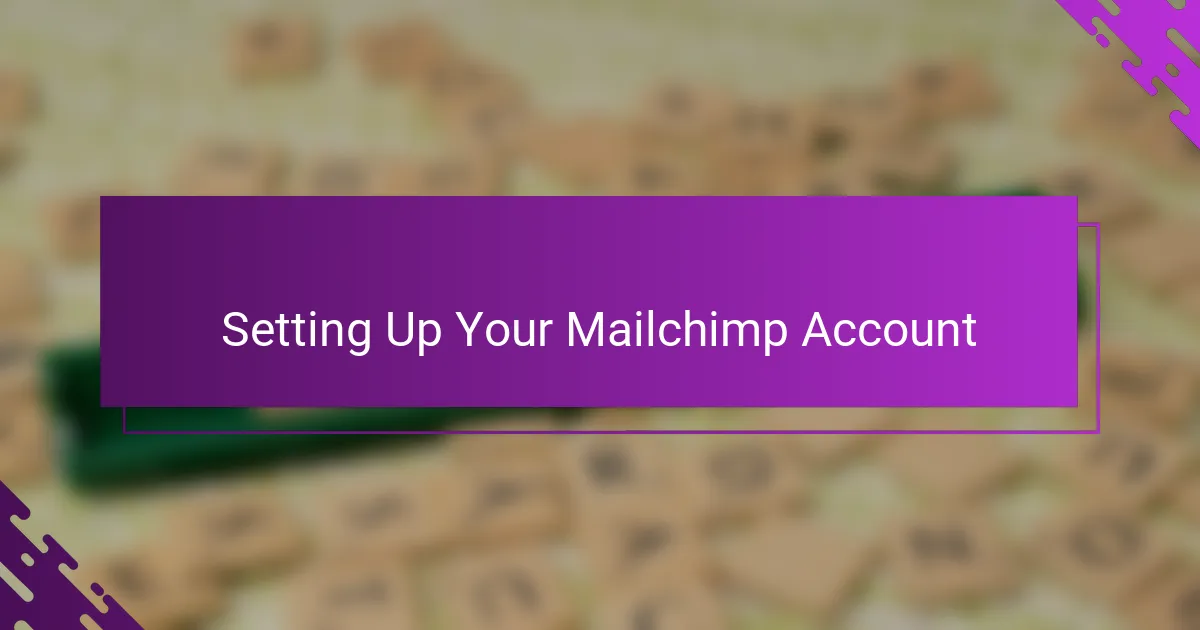
Setting Up Your Mailchimp Account
Setting up my Mailchimp account was surprisingly straightforward—I remember feeling a mix of excitement and slight overwhelm as I navigated through the initial sign-up steps. Have you ever hesitated to try new tools because the setup looked complex? Mailchimp really simplifies this by guiding you through entering basic details and setting up your first audience list.
One thing I found particularly helpful was naming my audience carefully. It seemed like a small detail, but this helped me stay organized as more subscribers joined. Plus, Mailchimp’s prompts about data privacy made me pause and think—how can I respect my readers’ information while building trust? That reflection made setting up the account feel less like a chore and more like the start of a meaningful relationship.
Adding my first email template felt like crafting a handwritten letter to friends. The drag-and-drop editor was so intuitive that I quickly moved from hesitant beginner to confident creator. I wondered, how could something so easy to use produce emails that looked so professional? Setting up my Mailchimp account wasn’t just about technical steps—it was my first step toward turning my blog’s voice into a vivid, personal message.
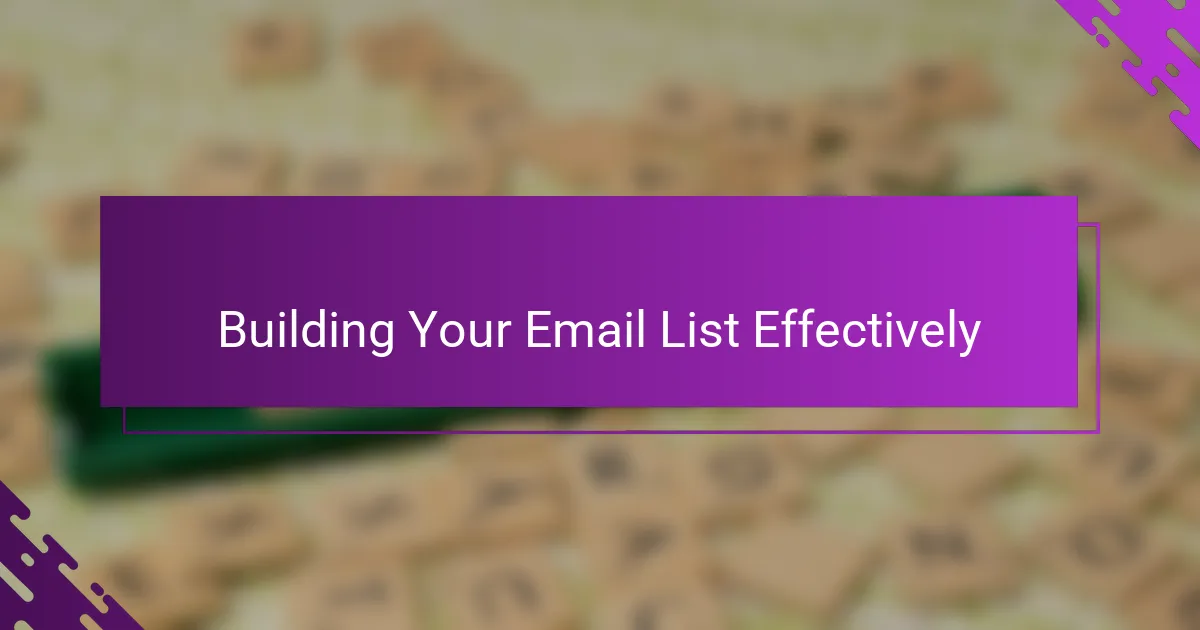
Building Your Email List Effectively
Building an email list felt daunting at first—I wasn’t sure where to start or how to convince readers to sign up. What helped me was creating a clear, simple opt-in offer that spoke directly to my blog’s audience, offering something valuable without overwhelming them. Have you ever thought about what your readers truly want in exchange for their email? Pinpointing that made all the difference for me.
Another key moment in growing my list came when I embedded sign-up forms strategically across my blog. Instead of burying them at the bottom of pages, I placed them where readers naturally paused—within popular posts or after sharing personal stories. This small change boosted my conversions significantly and made me realize the importance of timing and placement in list building. Do you notice where you tend to linger on a blog? That’s often the best spot to invite readers to join your circle.
Lastly, I learned that consistency matters just as much as creativity. Sending regular, valuable emails encouraged trust, so my list didn’t just grow—it stayed engaged. It’s easy to forget that collecting emails is only the start; keeping that relationship alive is what transforms a newsletter into a community. Have you considered how often you’d want to hear from your favorite bloggers? Balancing frequency with meaningful content became my secret to building a loyal audience.
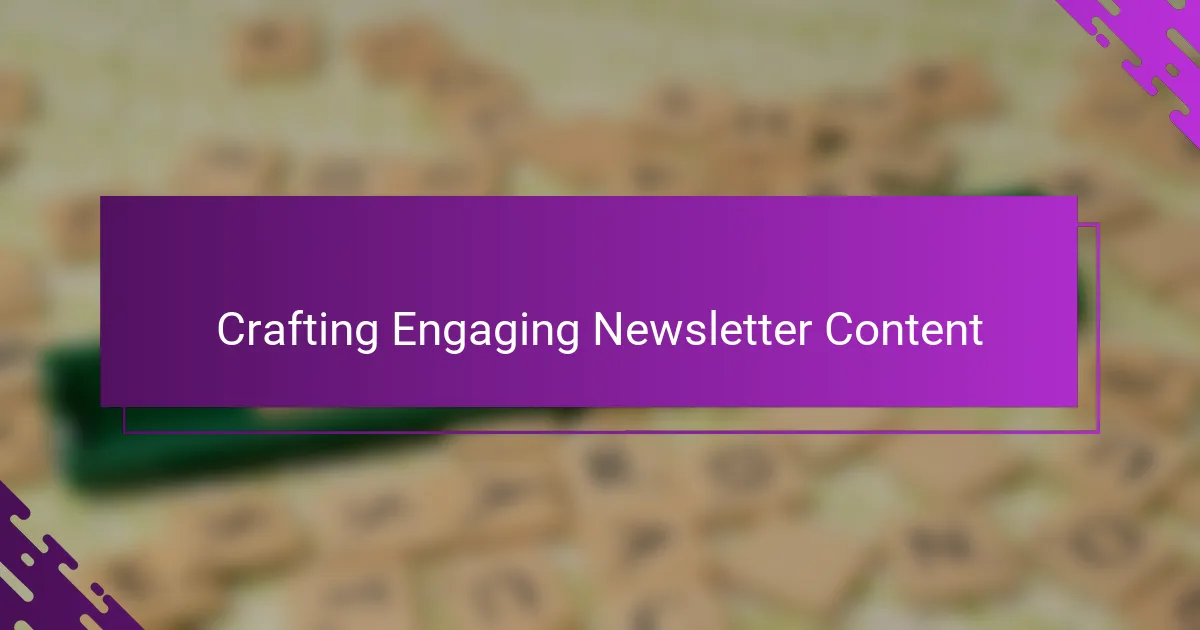
Crafting Engaging Newsletter Content
Crafting engaging newsletter content became my way of turning a routine email into a small moment of connection. I realized early on that storytelling wasn’t just for blog posts; weaving personal experiences and inviting readers behind the scenes created a warmth that made subscribers look forward to each message. Have you ever received an email that felt like a letter from a close friend? That’s exactly the vibe I aimed for.
One thing I learned is that brevity paired with clarity is a powerful combo. Readers skim emails faster than you think, so I made sure each sentence carried weight—whether sharing a quick tip, a heartfelt thought, or a question that sparks curiosity. Sometimes, I’d test different approaches, like starting with a question or dropping a surprising fact, and watching in my analytics how those small tweaks boosted engagement.
Visuals also play a subtle, yet impactful role. Incorporating images and clean layouts through Mailchimp’s editor didn’t just make my newsletters prettier; it helped break up text and drew attention to key points. I found that mixing style with substance kept readers both entertained and informed, creating a balance that felt natural rather than salesy or overwhelming. Have you experimented with how your emails look versus what they say? It’s a game changer in keeping readers hooked.
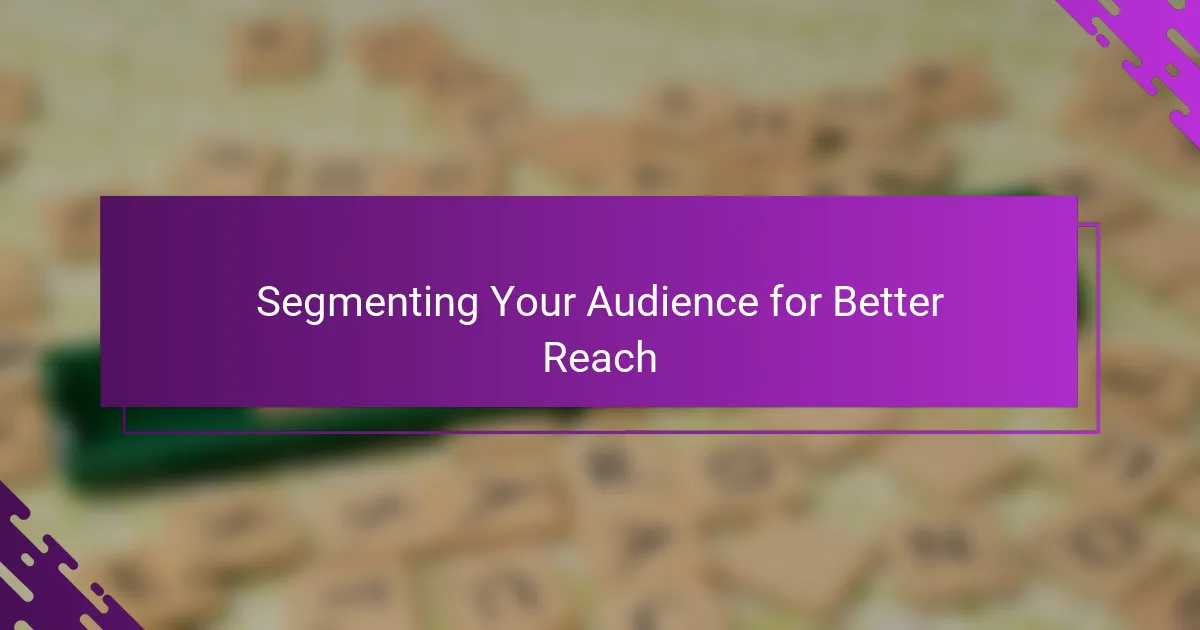
Segmenting Your Audience for Better Reach
Segmenting my audience was a game changer—I started by noticing patterns in what my readers clicked on and responded to. Have you ever wondered why some emails feel like they’re written just for you? That’s exactly what happens when you send targeted messages based on interests or behaviors.
At first, I hesitated to divide my list, worried I might overcomplicate things. But then I saw my open rates climb and the conversations spark differently with each group. It felt like speaking to smaller, more intimate circles rather than just a crowd, which made my efforts more rewarding.
Mailchimp’s segmentation features made this process intuitive. I could easily tag subscribers who loved travel stories separately from those who preferred personal growth tips. Have you tried sending content tailored to specific groups? If not, I’d say it’s worth the experiment—it transformed how my readers engage and showed me how diverse their interests really are.
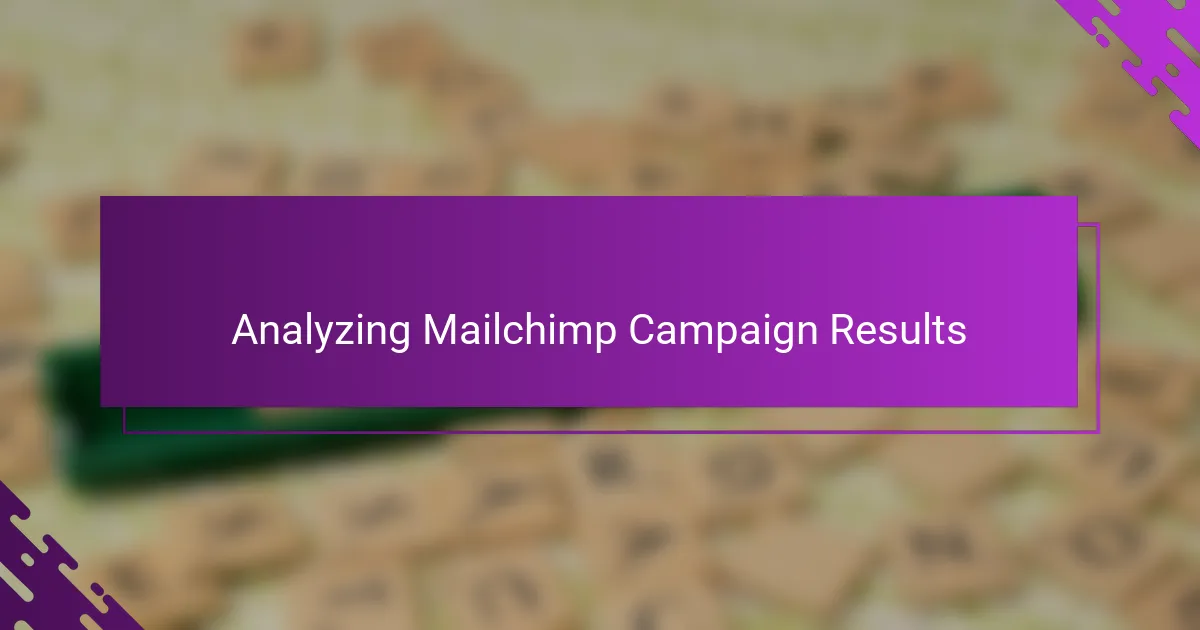
Analyzing Mailchimp Campaign Results
Diving into Mailchimp’s campaign analytics was like opening a window into my readers’ minds. Seeing which emails had higher open rates made me wonder—what was it about those subject lines or send times that caught their attention? This data wasn’t just numbers; it became a guide for crafting future messages that truly resonated.
One eye-opening moment came when I noticed a drop in clicks despite good open rates. That made me rethink the actual content and call-to-actions. Have you ever sent an email that readers opened but didn’t interact with? For me, Mailchimp’s detailed reports helped identify these gaps and nudged me to fine-tune my approach.
Mailchimp’s dashboard also gave me a snapshot of subscriber growth and engagement trends over time. Watching these trends evolve felt rewarding and motivated me to keep experimenting. It’s fascinating how simple charts can tell stories about real people’s interests and behaviors—don’t you find that as inspiring as I do?
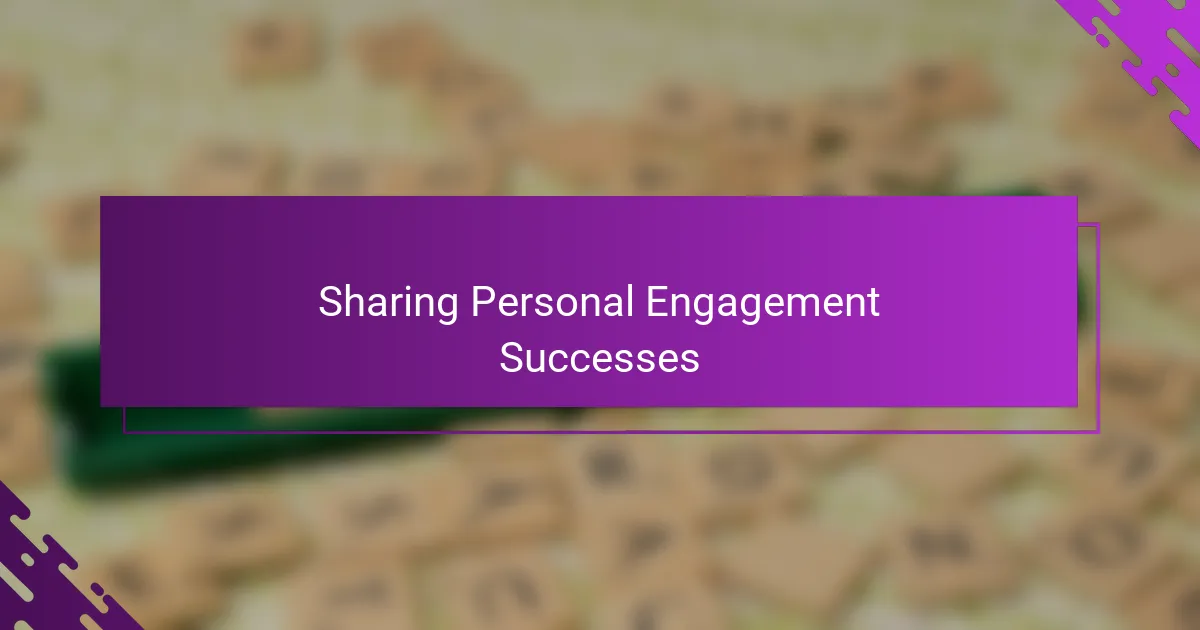
Sharing Personal Engagement Successes
Sharing my personal engagement successes with Mailchimp feels like sharing little victories that made all the difference. I remember the first time I saw my email open rates jump after tweaking a subject line based on Mailchimp’s insights—it was like hearing my readers’ voices saying, “We want to hear from you!” Have you ever experienced that thrill when something you tried actually clicks with your audience?
Another memorable moment was receiving thoughtful replies from subscribers who said my newsletters felt like genuine conversations rather than generic broadcasts. Those messages made me realize that behind the clicks and opens were real people connecting with my stories. Doesn’t it feel amazing to know your words are reaching hearts, not just inboxes?
What encouraged me most was watching subscriber engagement grow steadily over months, not overnight miracles but consistent progress fueled by small, purposeful changes. It proved that building a community is a journey, not a race—one email at a time. Have you noticed how rewarding it is when what you share truly resonates and sparks real interaction?
